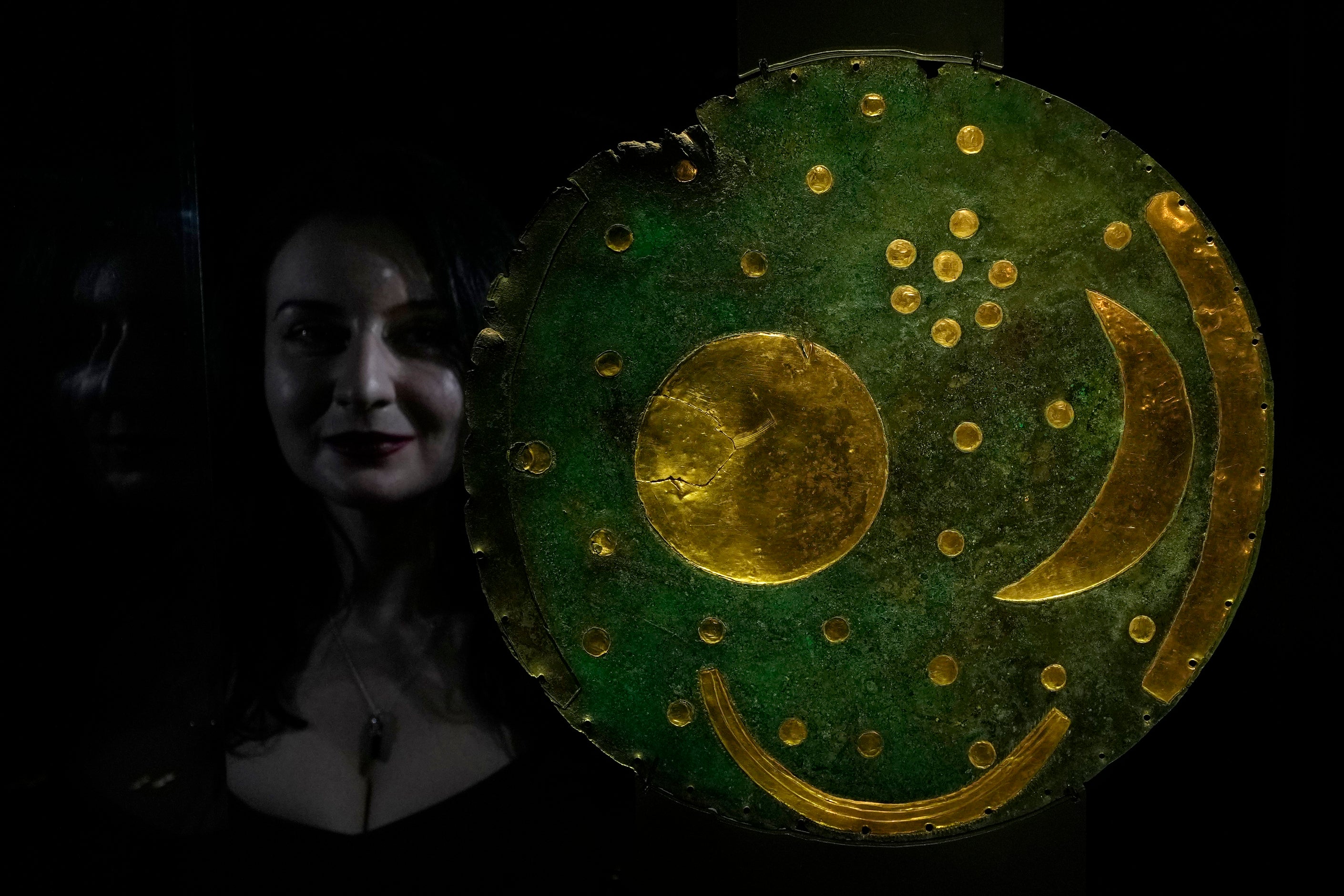Stonehenge through the ages: Exhibit brings builders to life
A new exhibition at the British Museum in London aims to shed new light on the ancient Stonehenge monument and on the people who built it

Your support helps us to tell the story
From reproductive rights to climate change to Big Tech, The Independent is on the ground when the story is developing. Whether it's investigating the financials of Elon Musk's pro-Trump PAC or producing our latest documentary, 'The A Word', which shines a light on the American women fighting for reproductive rights, we know how important it is to parse out the facts from the messaging.
At such a critical moment in US history, we need reporters on the ground. Your donation allows us to keep sending journalists to speak to both sides of the story.
The Independent is trusted by Americans across the entire political spectrum. And unlike many other quality news outlets, we choose not to lock Americans out of our reporting and analysis with paywalls. We believe quality journalism should be available to everyone, paid for by those who can afford it.
Your support makes all the difference.For a monument that has been drawing crowds for thousands of years, Stonehenge still holds many secrets.
The stone circle, whose giant pillars each took 1,000 people to move, was erected between 5,000 and 3,500 years ago on a windswept plain in southwest England. Its purpose is still debated: Was it a solar calculator, a cemetery, a shrine?
A new exhibition at the British Museum in London unravels some of the mystery — Stonehenge was, at times, all those things. But the exhibition's bigger goal is bringing to life the sun-worshipping and surprisingly sophisticated people who built it.
“We all feel we know Stonehenge,” lead curator Neil Wilkin said Tuesday. “We drive past it on A303 (the highway), and we visit as schoolchildren or bring our kids to see it. But often we don’t know much, or feel like we don’t know much, about the world, the people who built the monument and who came to worship at the monument.”
“The World of Stonehenge” exhibition assembles more than 430 objects from across Europe to explore the monument’s creators and their world. It was a time of radical change that saw technological advances, large-scale migration and social transformation.
The objects explore successive groups of people who lived in the area, 80 miles (130 kilometers) southwest of modern-day London. The semi-nomadic Neolithic farmers who built the first phase of Stonehenge — with stones hauled 150 miles (250 kilometers) from Wales — were followed by Bronze Age farmers, traders and warriors who were deeply intertwined with continental Europe.
The evolving uses of Stonehenge reflect that changing society.
At first it was a cemetery, where the cremated remains of 150 to 200 men, women and children, a seeming cross-section of society, were interred.
“People often ask, is it like the Pyramids? But there’s no pharaoh in the middle of this monument,” said Wilkin. “It’s more of a communal enterprise.”
Later, the original bluestones were encircled in a ring of 13-foot (4-meter) standing stones capped with lintels, much of which still stands. Wilkin said the monument became a site for “ancestral veneration and for ceremonies” that drew visitors from far afield.
Its fame is reflected playfully in the very first object displayed in the show, an ancient cup whose shape mimics that of Stonehenge.
“It's almost like a prehistoric souvenir,” said project curator Jennifer Wexler.
There are many other arresting images in the exhibition, from a wall covered in scores of Neolithic stone axes to finely wrought gold hats and jewelry that look medieval but are many centuries older.
Stonehenge was not the only circular “henge” monument built in ancient Britain. The exhibition includes Seahenge, a circle of oak posts made 4,000 years ago and near-miraculously uncovered by the waves on an English beach in 1998.
Like Stonehenge, it’s believed to have been aligned with the sun, which was central to the lives and beliefs of these ancient societies. Stonehenge is aligned with sunrise and sunset, respectively, at the summer and winter solstices, the key dates in the calendar for ancient farmers.
The exhibition’s star item is the 3,600-year-old Nebra Sky Disc, a bronze disc inlaid with gold symbols representing the sun, moon and stars, believed to be the oldest surviving map of the cosmos. The disc was found in 1999 in eastern Germany, but the gold comes from Cornwall in southwest England — evidence that ancient Britons were more connected than we might think.
“People were inquisitive and adventurous, despite having relatively short lives compared to us,” Wilkin said. “There is a really large amount of mobility and migration at this time.”
That mobility eventually swept away the Stone Age culture that built Stonehenge, as metalworking immigrants from Europe brought social, technological and demographic transformation.
Wexler said metal brought a more unequal society “because people are getting access to these blingy materials and making these beautiful objects.”
As a visitor walks though the exhibition, Neolithic stone carvings give way to elaborately wrought gold objects.
Metal meant people could carry important symbols with them, perhaps lessening the need for stone monuments like Stonehenge. In its final phase of use, Stonehenge became something of a status symbol, surrounded by burial mounds as society’s elite sought a prime resting place.
Wilkin said the exhibition aims to underline the human side of the shift from Neolithic era to Bronze Age.
“We’ve known about that as a technological change,” he said. “But what we’ve been able to do in the show, I think, is to show that it had a big impact on people’s beliefs, and how they saw their identities.”
___
“The World of Stonehenge” opens Thursday and runs to July 17.